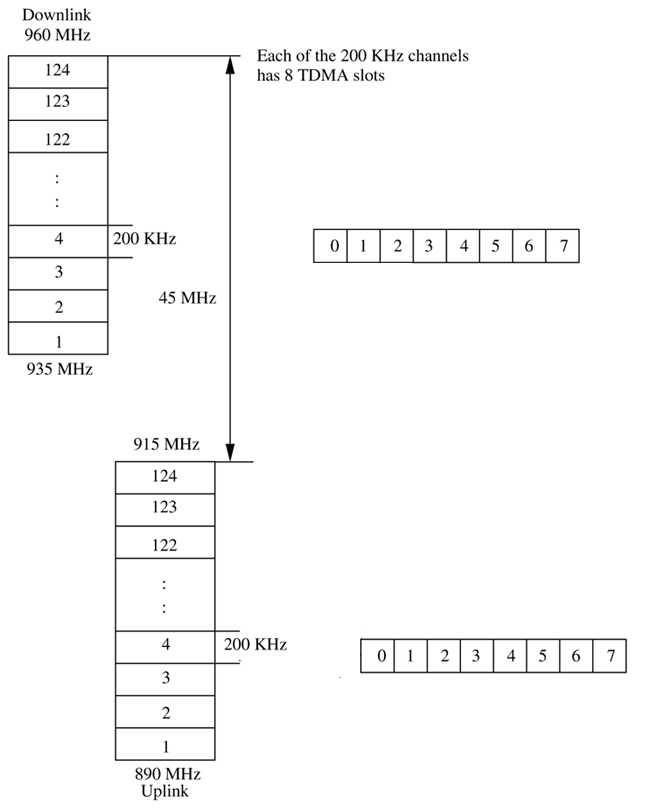| Mobile Data - How It Works |
| Written by Harry Fairhead | |||
| Wednesday, 25 January 2012 | |||
Page 1 of 2 What makes a smart phone more like a computer is its ability to connect to the internet and transfer data. For a digital device you might think this was easy but it has been a long and difficult road from 1G to 4G.
To date mobile phones have gone through roughly three generations as can be seen in the diagram below and we are currently watching the fourth being introduced.
The diagram shows the rough development of mobile phone technology, you might be surprised to see that there isn't much information on 4G. The reason is that 4G is a term used to mean "anything that goes faster than 3G" and as such it doesn't represent a single technology unlike the previous evolutions. Evolution from analog to GSMThe first generation of mobiles phones used a mostly forgotten analog technology that served to get the mobile phone market off the ground. Most of the phones in use at the moment the 3G evolution of the original 2G design based on a technology called GSM – Global System for Mobile communications. In Europe, they tend to think that “mobile phone” is synonymous with GSM but this isn’t quite true. In the early days there were a number of different and incompatible systems deployed worldwide. Even today GSM only accounts for just over 70% of the world market, with alternatives such as CDMA (13%), iDEN (1%), PDC (4%) and TDMA (8%) making up the rest. Even so it is fair to say that GSM is the global standard for roaming and in Europe is the only standard. Although 3G is very definitely the desirable goal there are some interim measures that improve on the data transmission capabilities of 2G so much that it’s fair to call the result 2.5G. In theory the progress from 2G, through 2.5G to 3G should be smooth and backward compatible – as long as we stick with GSM-based systems. As with 2G mobile phone technology, there is a range of different and incompatible 3G developments. To distinguish these from the GSM-compatible versions, the term 3GSM is sometimes used. It is worth knowing that the jargon used varies greatly and does nothing to help work out what is compatible with what. 3GSM is essentially a GSM network that uses Wideband-CDMA (W-CDMA) as its transmission method (see later for an explanation). It is currently claimed that 85% of the world’s network operators have chosen 3GSM as their underlying technology but it is important to be aware that there are variations and alternative technologies that are also referred to as 3G. For example, although Japan has implemented a system based on W-CDMA it uses its own special variation. When if comes to 4G the situation is even more confused and disparate. It all starts with 2G CellsIt’s time to look at the details of how it works and in particular what makes 3G so much better than 2G. When the 2G digital networks were being implemented the state of radio communications was nowhere near as advanced as it is today. The system used depended on a mix of traditional wireless communications and computer techniques. A block of frequencies is allocated enough to provide around 800 one-way signal channels – and for two-way or full duplex communication you need two channels per phone bringing this down to 400 connections. This clearly isn’t enough to offer communications channels to a very large population and the key to making things work is “frequency reuse”. By using low power transmission a block of frequencies can be used to provide, say, 100 duplex channels over a small area – called a cell. A hundred channels can also be provided in each of the neighbouring cells without interference by using a different set of frequencies. Once a cell is far enough away from the first cell the same set of frequencies can be used over again, as in the case of the two cells coloured blue:
The cell principle allows the same set of frequencies to be used over and over again without interference. The size of a cell varies greatly depending on population and usage. Today there is a move towards the microcell that serves maybe a building or a block. Using microcells or even smaller cell sizes is one way to increase the overall data carrying capacity of a set of frequencies. The cell principle is the reason why we sometimes call GSM phones “cell phones”. However there is more to GSM than just the use of cells. Allocating a single physical channel to a single connection would be a huge waste of resources. Instead each physical channel is divided into eight time slots (0.577 ms in duration), which are time-shared between as many as eight users. This is called Time Division Multiple Access (TDMA) and this plus the use of different frequencies for each connection – Frequency Division Multiple Access (FDMA) are the two main technologies that make up GSM.
A cell’s allocation of frequencies is split into two portions used for up and down links. A duplex (two-way) connection uses one frequency band from the uplink and one from the downlink set separated by 45Mhz. Each 200KHz wide channels is further divided into 8 time slots. |
|||
| Last Updated ( Wednesday, 25 January 2012 ) |



